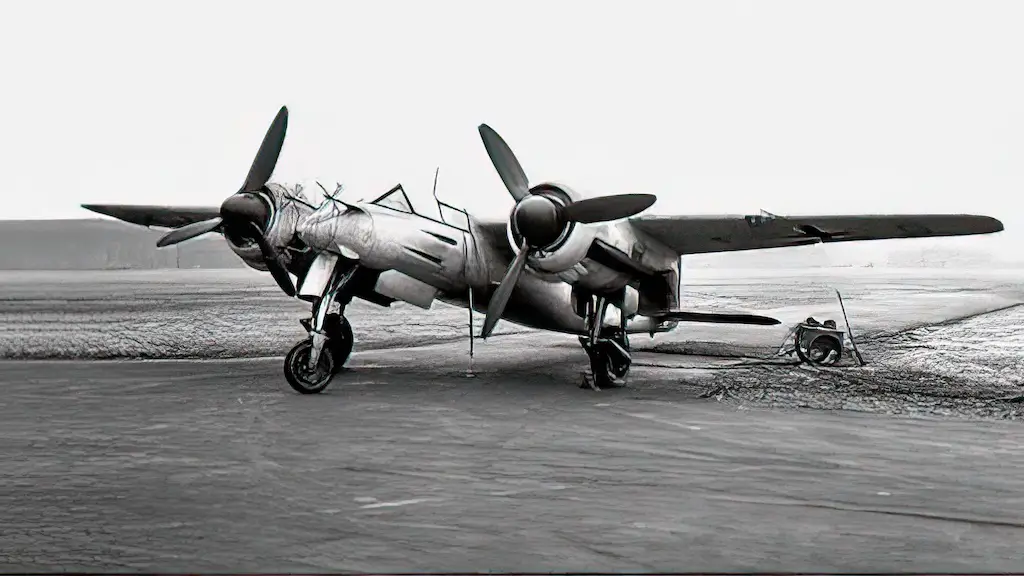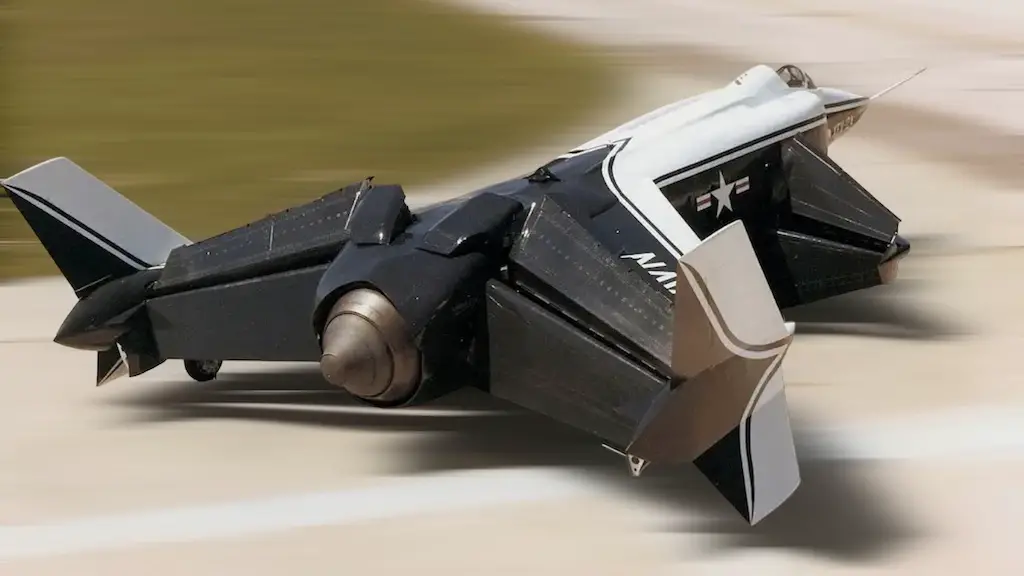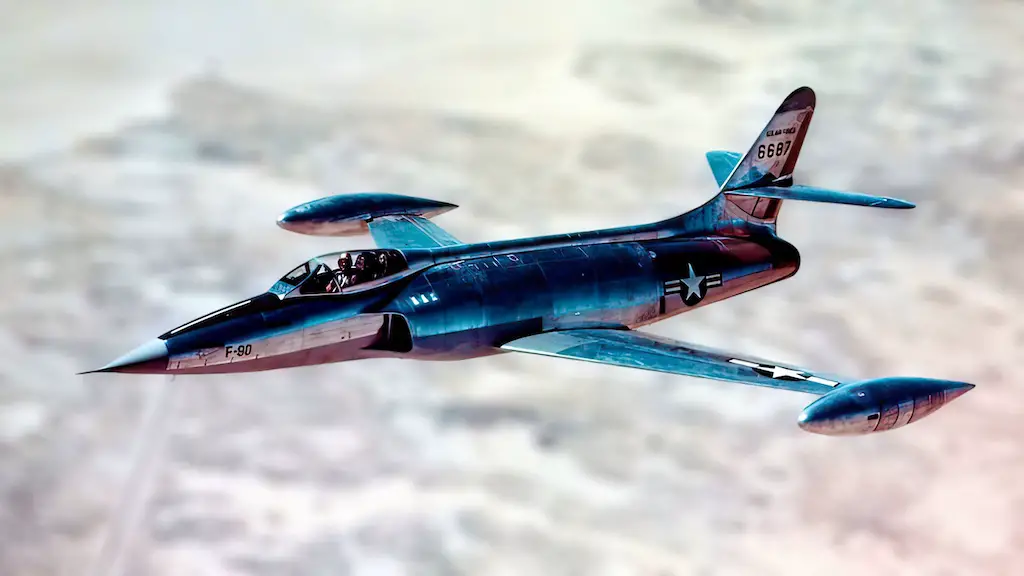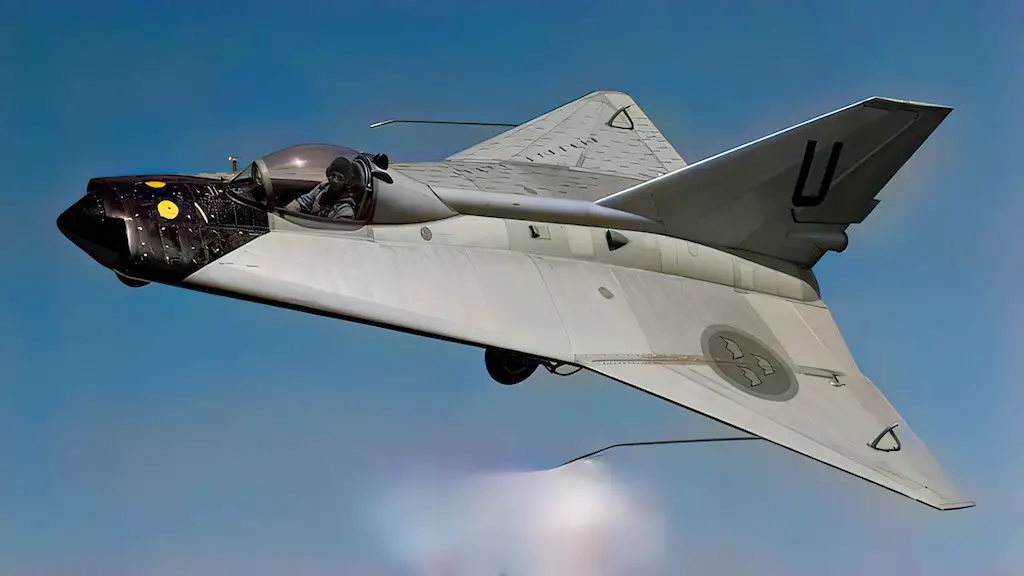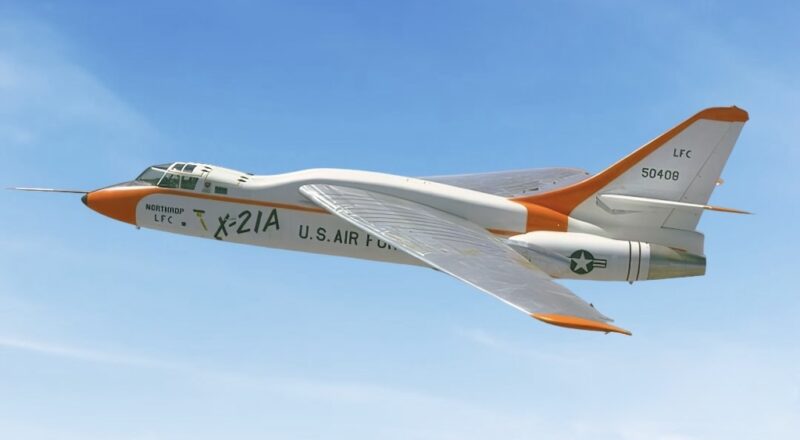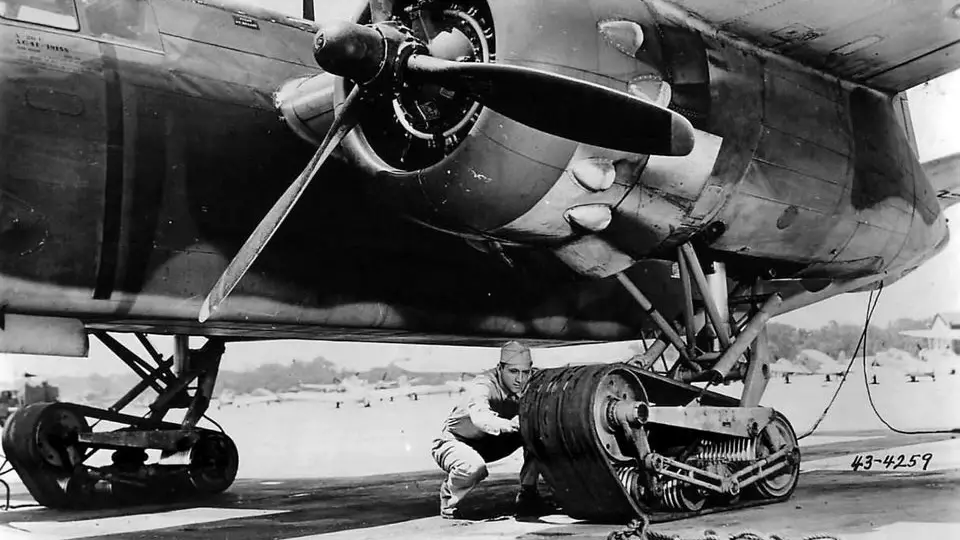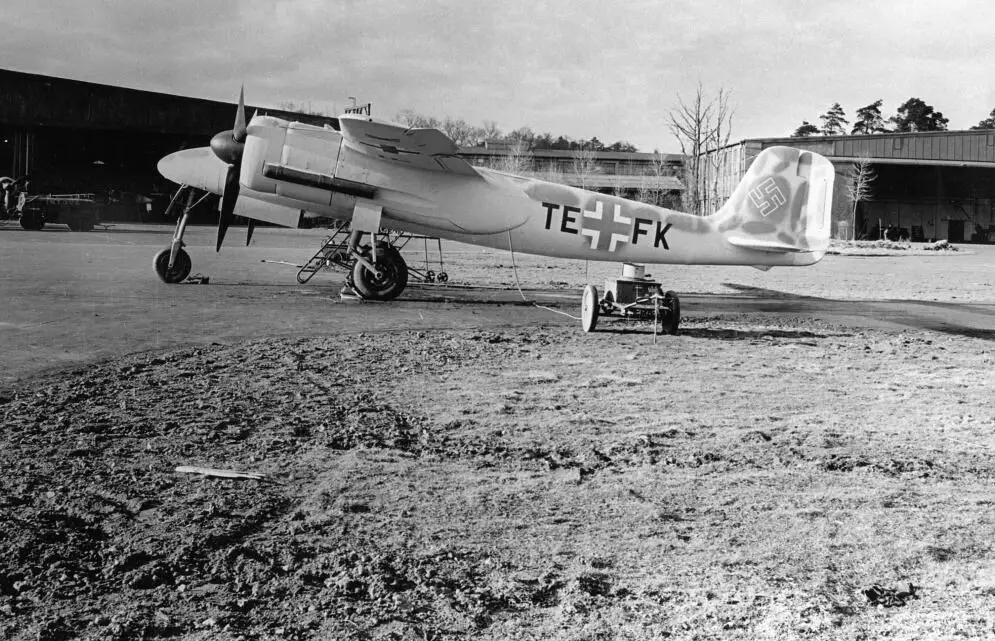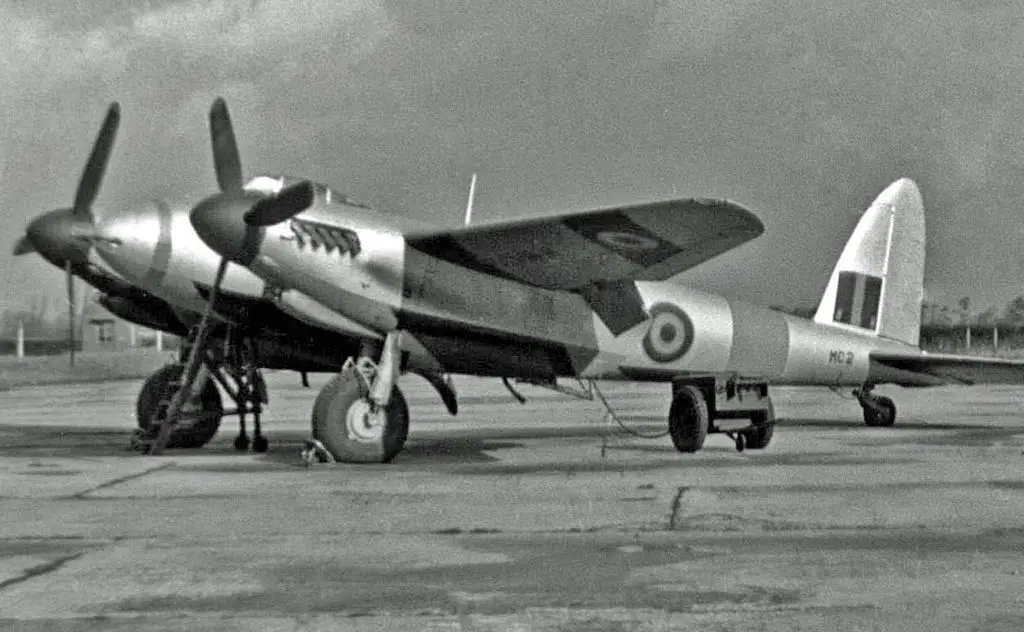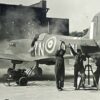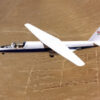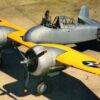Now, before you start swatting around and accusing us of typos, let’s make one thing clear: this Moskito, despite its buzzing moniker, is not the British de Havilland Mosquito, though the namesake might seem to suggest a case of trans-Atlantic identity theft! Now that we’ve cleared the air (pun intended), let’s chart the journey of this lesser-known German insect of the skies and explore its promising, albeit brief, flutter in the annals of aviation history.
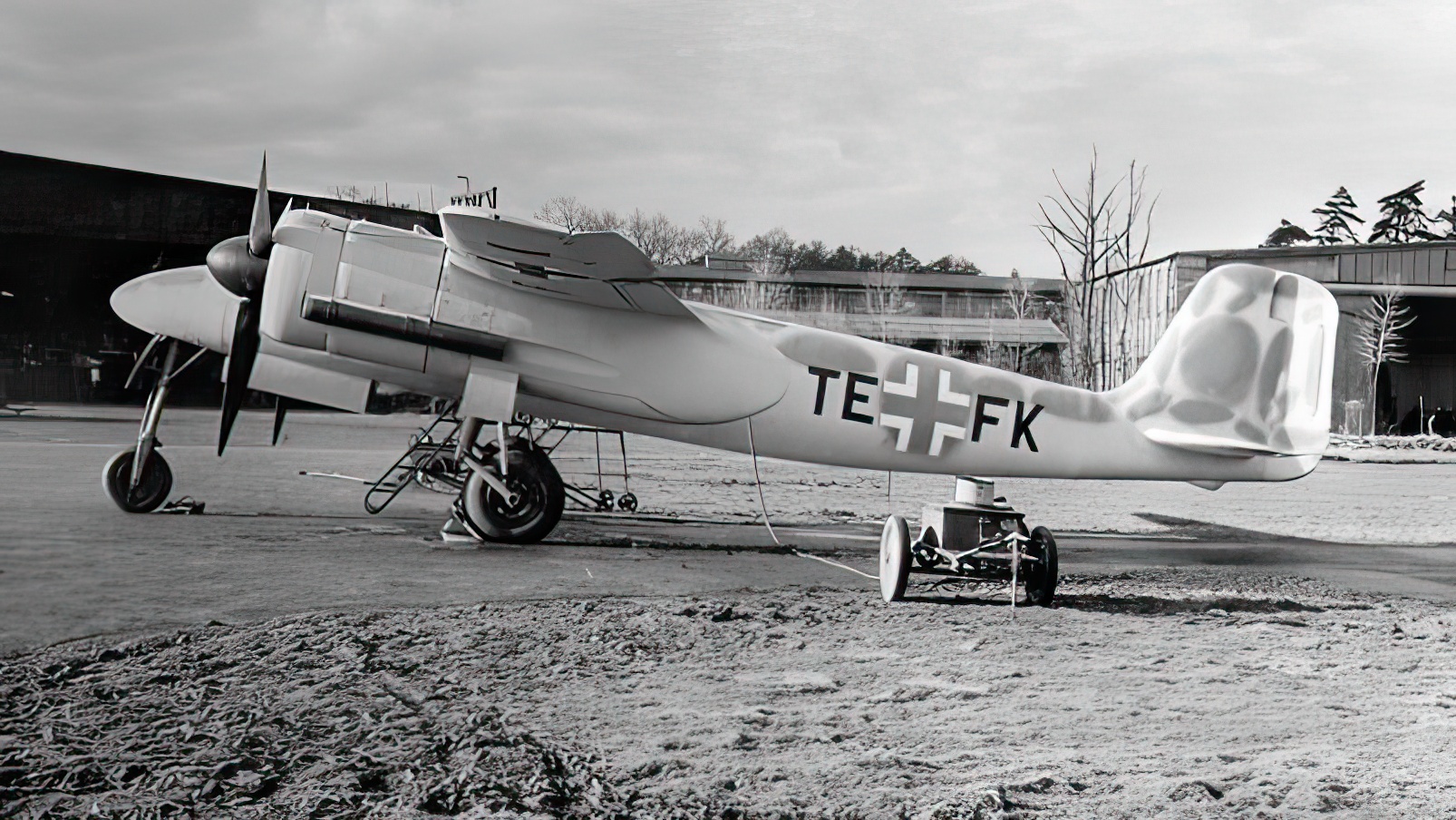
A Race Against Time
The curtain opens to the year 1943. Europe, entwined in the throes of World War II, bore witness to a fearsome arms race as each nation strove to outdo the others in technology and firepower. Germany, in this desperate dance, sought a night fighter capable of combating the Allied bombers effectively. Here, our protagonist enters the stage: the Focke-Wulf Ta 154 Moskito. Conceived under the auspices of Kurt Tank, the legendary designer at Focke-Wulf, the Ta 154 was to be Germany’s answer to the British de Havilland Mosquito.
Tank, an accomplished visionary, saw a unique opportunity to construct a light, fast, and powerful night fighter that could meet the urgent demands of the Luftwaffe. He proposed the use of wood in the aircraft’s construction to conserve scarce metals, a decision that mirrored the de Havilland Mosquitos design philosophy.
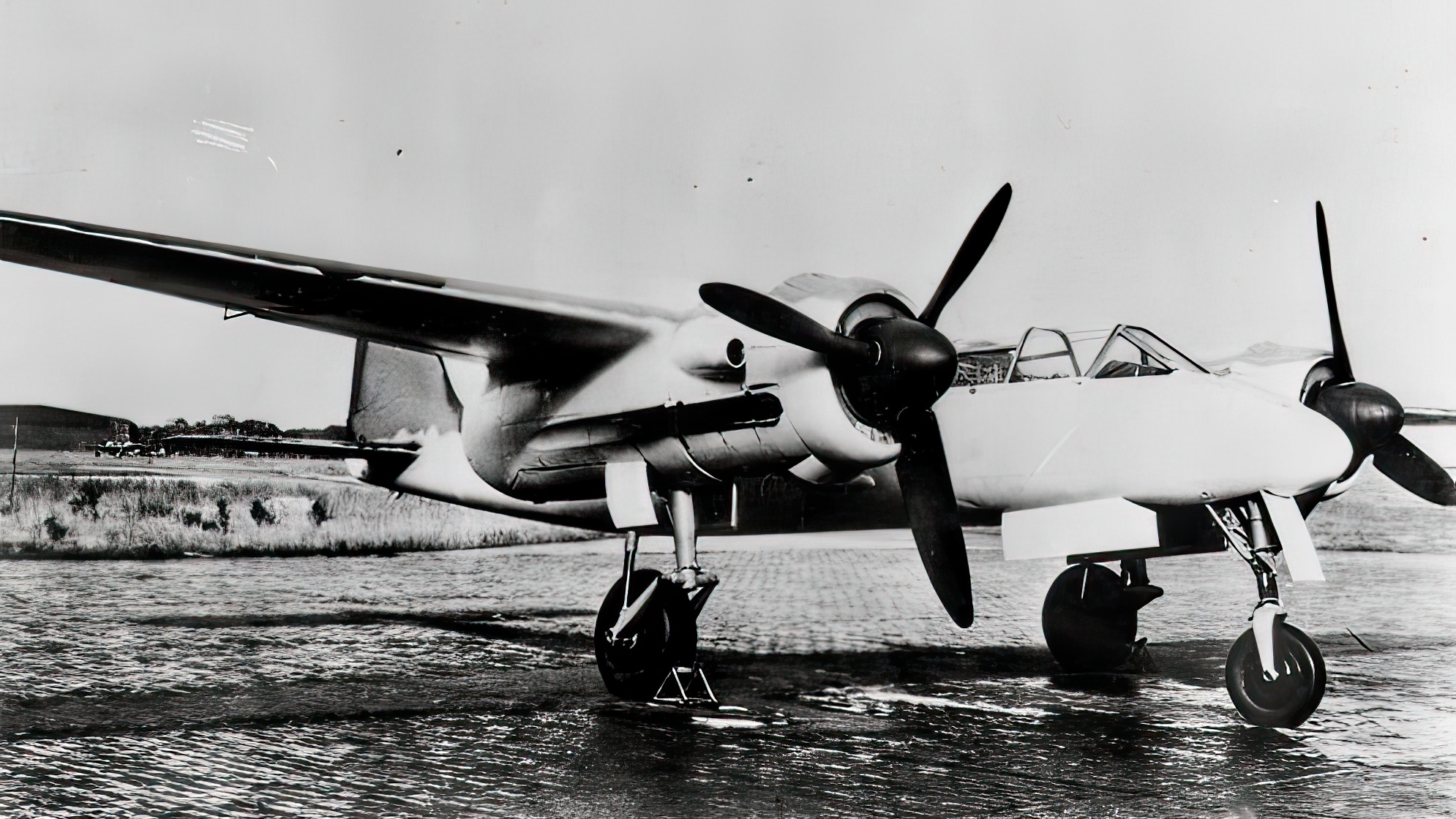
Taking Flight
The first prototype, the Ta 154 V1, soared in its maiden flight on July 1, 1943, its twin Junkers Jumo 211N engines humming fiercely against the German sky. Subsequent prototypes demonstrated promising top speeds and climb rates, suggesting a potent weapon in the night skies. But, as is often the case with innovation, the Ta 154 had its fair share of birthing pains.
A notable setback was the failure of the landing gear during a test flight in November 1943. The Ta 154 V3 prototype crashed as a result, leading to an urgent review of the design. Modifications, though prompt, resulted in weight increases that impacted the aircraft’s performance.
Beyond the Blueprints
From its sleek, tapered wings to its powerful engines, the Ta 154 exhibited an aggressive stance befitting a night hunter. Its streamlined design offered low drag and high speed, essential for intercepting fast bombers. Equipped with advanced radar technology, the Ta 154 was ready to hunt under the cover of darkness.
However, beneath the veneer of an ideal night fighter, the Ta 154 hid its flaws. Despite its wooden construction promising weight saving, the necessary strengthening for the landing gear added considerable weight. Furthermore, the Ta 154 suffered from the lack of a suitable adhesive, Tego film, a key element for constructing the wooden airframe. The substitute glue, Kaurit, was less resistant to moisture, leading to airframe failures.
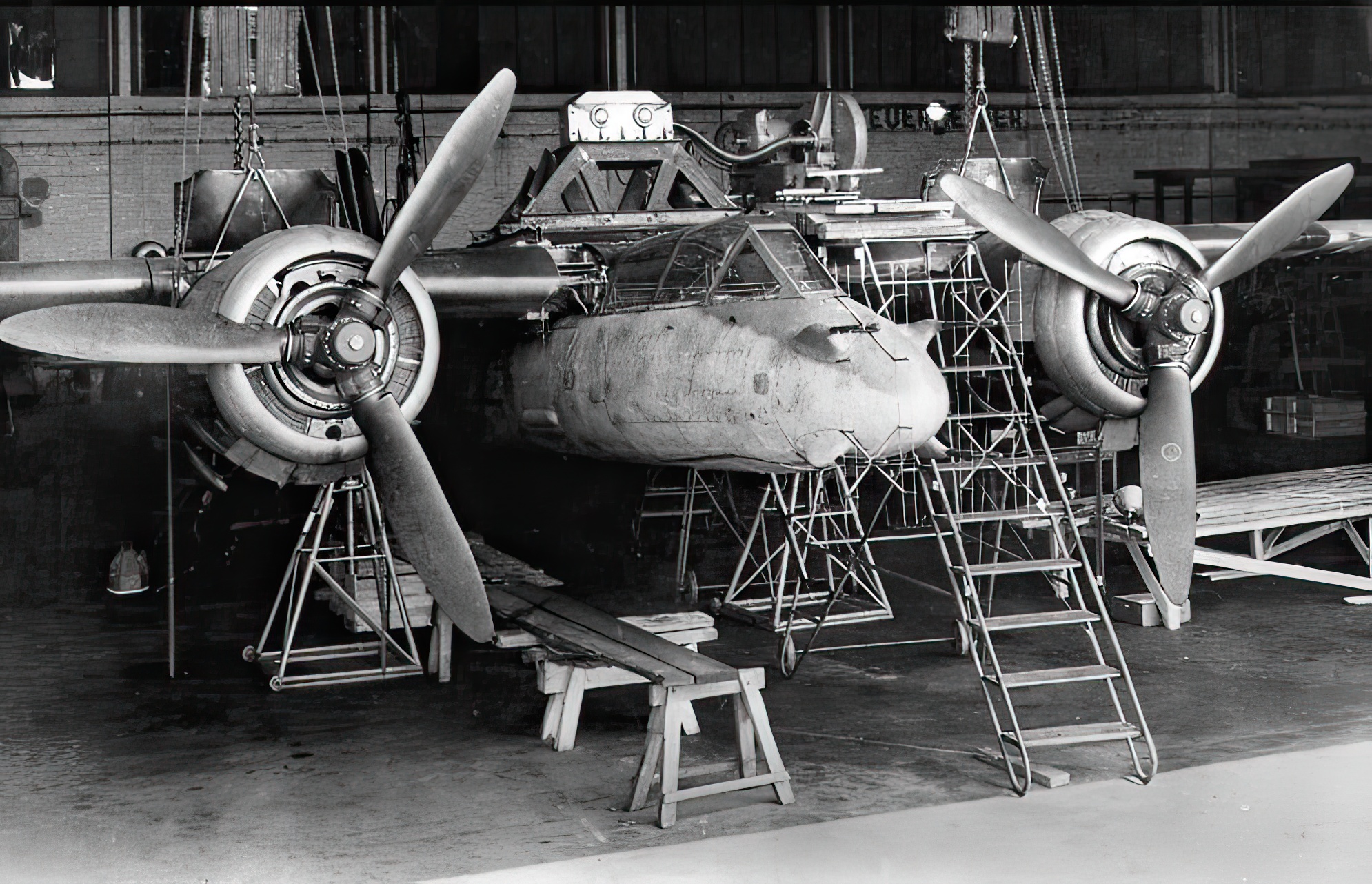
Lost in the Pages of History
By mid-1944, with only a handful of Ta 154s manufactured, the program encountered a deathblow. A fire at the Tego film factory made production of the superior adhesive impossible. Forced to rely on the inferior Kaurit, the aircraft started showing signs of delamination and structural weakness, an ominous outcome Tank hadn’t anticipated. Moreover, the pressing demand for resources elsewhere in the German war machine made the continuance of such a troubled project untenable.
In a twist of irony, the Ta 154 Moskito, created to be Germany’s answer to its British namesake, mirrored the de Havilland Mosquito in more than just its construction material. Both aircraft promised extraordinary performance but found their destinies moving in opposite directions. While the British Mosquito became a legend in its own right, the Ta 154’s story was cut short, leaving behind only a handful of prototypes and unfulfilled dreams.
The Focke-Wulf Ta 154 Moskito stands today as a symbol of both ingenuity and miscalculation. Its tale serves as a reminder of the intricate dance between ambition, necessity, and the cold, hard ground of practicality. Amid the heat of warfare, under the shadow of urgency, the Moskito, for all its potential, fluttered briefly and disappeared, leaving us to ponder what might have been.

